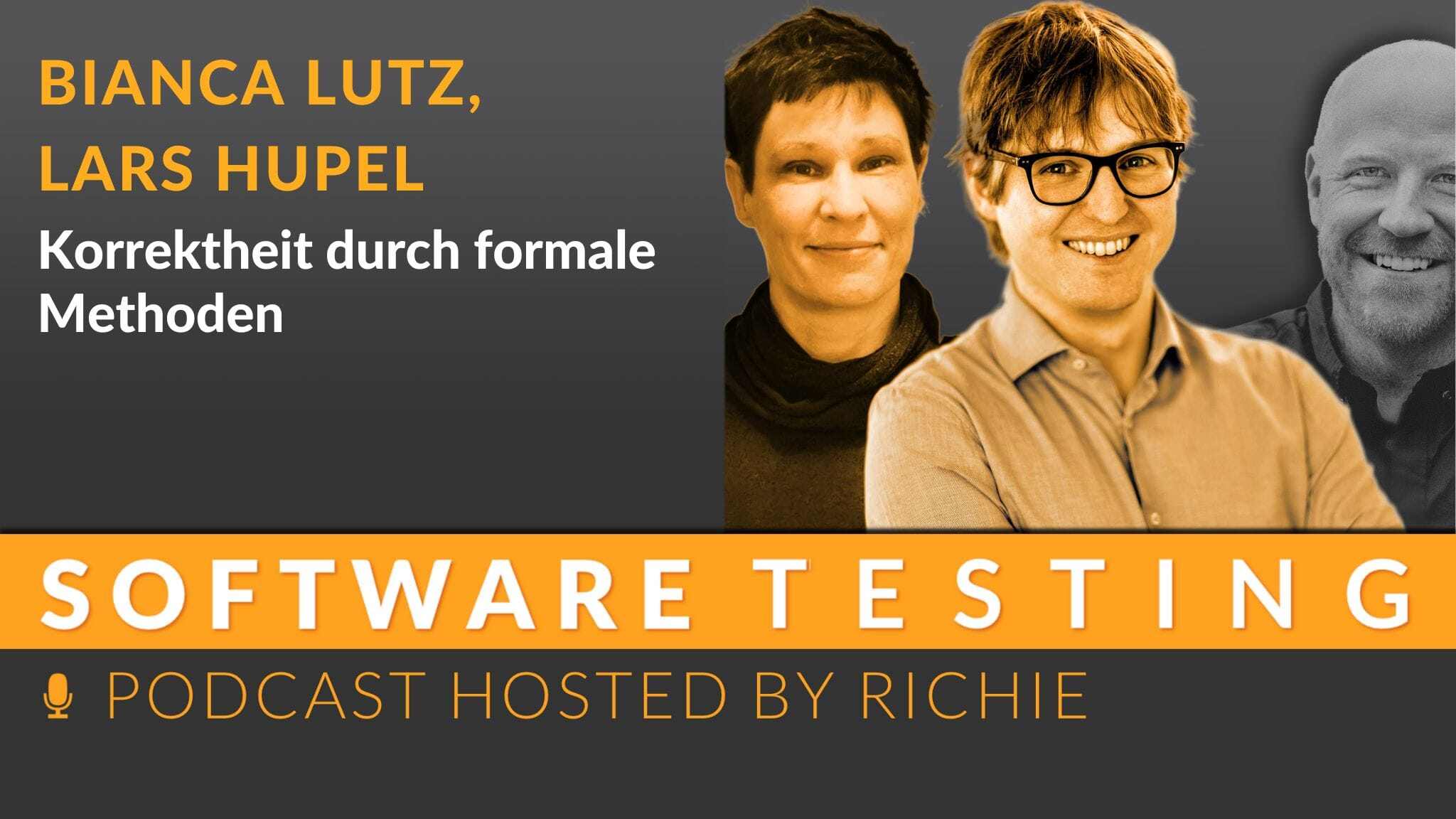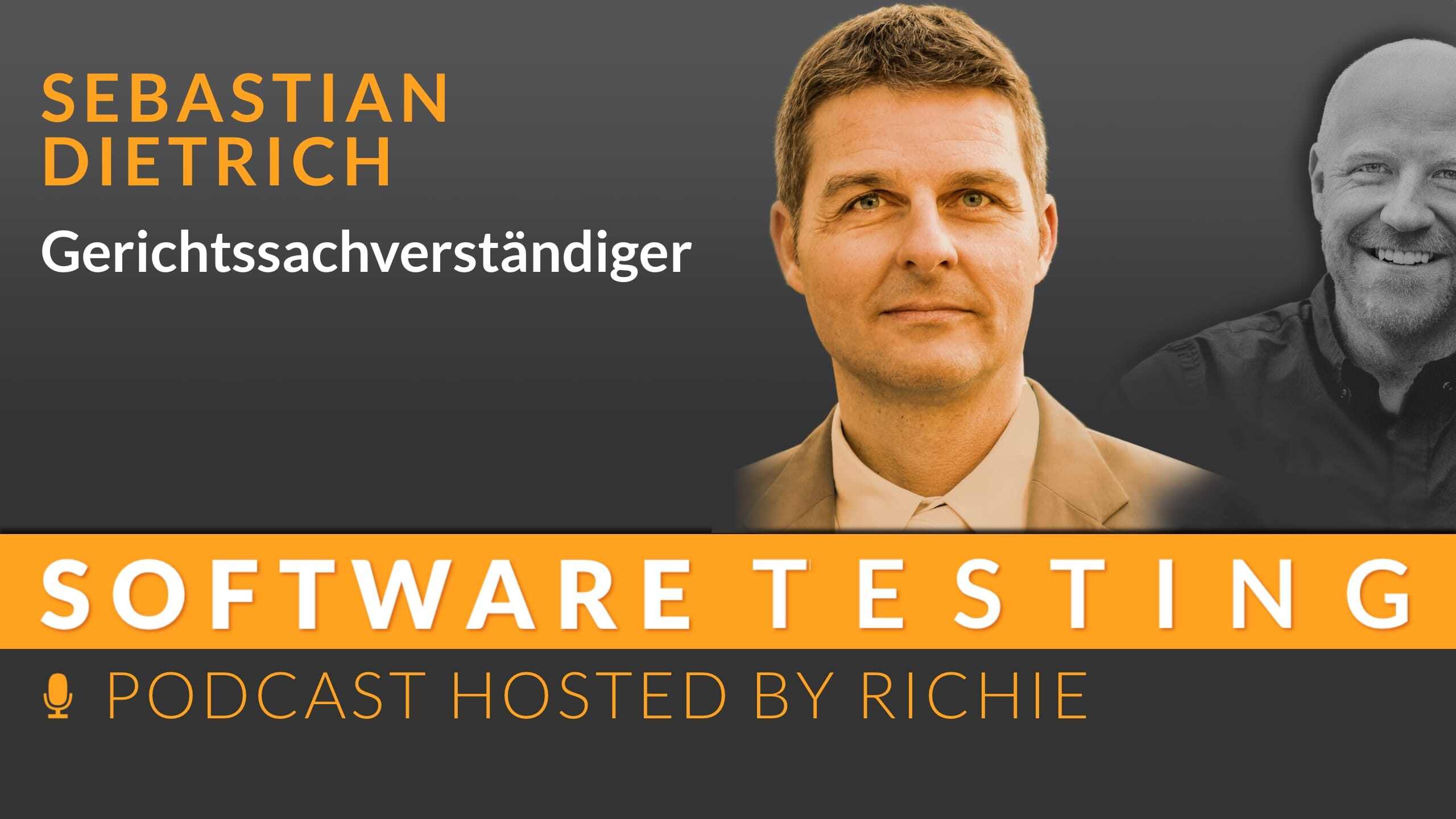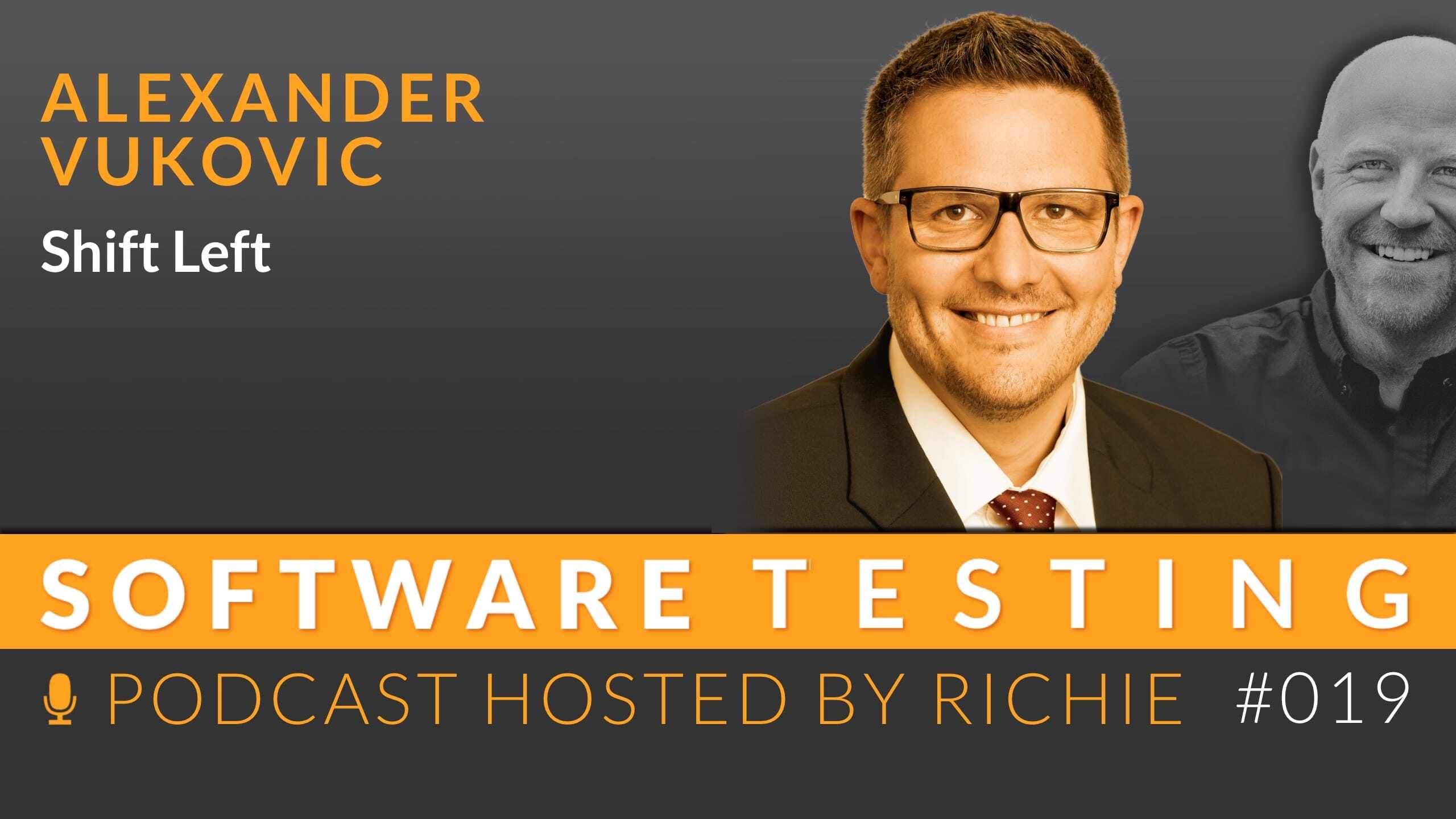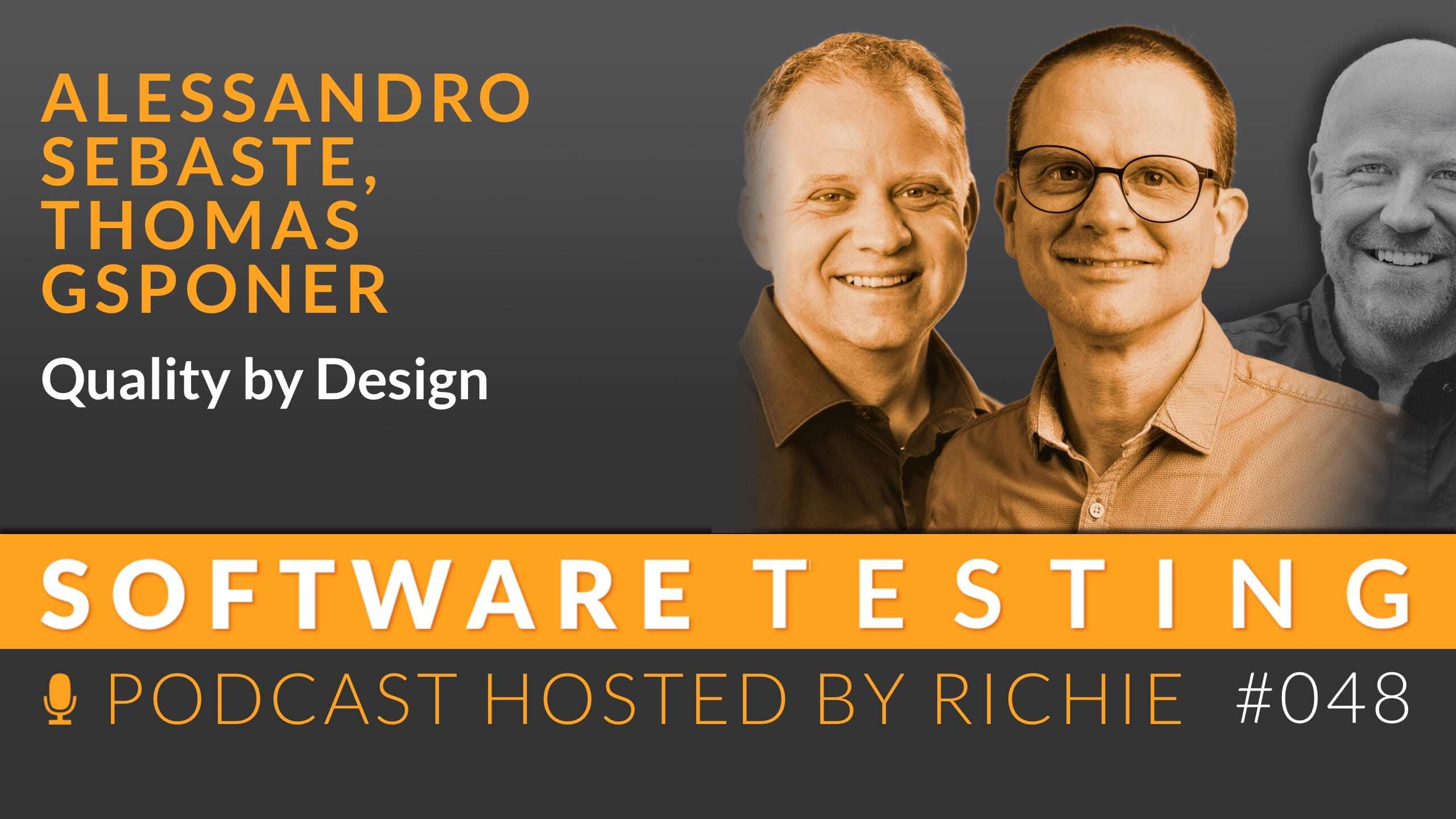Court Expert
Podcast Episode: Court Expert What actually happens when the software a company has bought doesn't work? Or worse still, if it causes damage? A...

In the latest episode of the Software Testing Podcast, we celebrate World Quality Week. I talk to Lars and Bianca about how to mathematically prove freedom from defects in software and which tools can help. Bianca uses examples from the financial and automotive industries to explain why certain systems require absolute freedom from errors. Lars complements the conversation with insights into formal methods and how they are applied in practice. One particularly interesting topic was how AI can support us in providing evidence.
"I can't prove freedom from errors with tests. There are simply certain domains where I need freedom from errors and also proof." - Lars Hupel, Bianca Lutz
Lars Hupel is Chief Evangelist for Digital Currencies at Giesecke+Devrient, an international security technology company. As part of this role, Lars holds and writes numerous talks, workshops and articles to make the technology behind digital currencies accessible to a wide audience. With a background as a software developer, Lars also contributes to product development and represents the company on various industry bodies. Lars holds a PhD in Logic and Verification from the Technical University of Munich and uses this knowledge to make Giesecke+Devrient's products even more secure.
Bianca Lutz is a software architect at Active Group GmbH and works from Berlin. She was already interested in formal methods during her studies and worked with the proof assistant Isabelle/HOL. But she is also still enthusiastic about technical topics such as operating systems, especially embedded systems. She has been involved in various scientific publications, is a Linux kernel contributor and has published in Isabelle's Archive of Formal Proofs as part of her thesis. After working in the insurance industry for several years, where she mainly dealt with legacy code, she switched to the functional programming camp in 2022.
In the field of software testing, absolute freedom from errors is difficult to guarantee. However, in certain industries - such as finance, automotive or medical technology - the requirements for freedom from errors are particularly high, as even small errors can have drastic consequences. For this reason, systems in such areas must be tested and validated with particular care.
Tests alone are often not enough to ensure complete correctness in safety-critical systems. Formal methods are used here and make it possible to provide mathematically rigorous proofs of the correctness of software. The use of proof assistants ensures that there are no logical gaps in the reasoning and checks. These methods complement conventional tests and increase the reliability of the results.
In practice, formal methods are often associated with considerable additional work. For example, it may be necessary to write up to ten lines of proof code for each line of regular code. Nevertheless, there are also less complex approaches such as type systems or model checkers, which are less comprehensive but still provide valuable insights and increase the quality of testing.
Automation and artificial intelligence (AI) are playing an increasingly important role in the creation of formal proofs. Some modern tools, such as Isabel, already use machine learning algorithms to generate proofs faster and significantly reduce manual effort. Such automated processes make the application of formal methods more efficient and accessible.
The combination of tests and formal methods is crucial to ensure the highest software quality. These techniques are not a stand-alone solution, but a valuable addition to traditional testing methods. Advances in the field of AI open up new opportunities to further develop these methods and make them even more widely applicable. The future therefore promises exciting developments in the interaction between AI and formal verification.
Formal methods are mathematically based approaches to the specification, development and verification of software and hardware systems. They use logic and mathematical models to prove the correctness and reliability of software and avoid errors during the development process.
Formal methods are important because they provide high accuracy and security by using mathematical proofs to avoid errors. They minimize the risk of errors in safety-critical systems and provide tighter control over the operation and integrity of software.
Frequently used formal methods are model checking, theorem proving and temporal logic. Model checking systematically checks all possible states of a system, while theorem proving uses mathematical proofs to confirm logical statements. Temporal logic examines correctness across time sequences.
Model Checking automatically tests all possible states of a system to find errors and is suitable for smaller, finite systems. Theorem Proving, on the other hand, proves mathematical theorems to confirm certain properties and is suitable for more general, but often more complex systems.
The application of formal methods can be challenging as it requires a lot of mathematical expertise and high computing power. In addition, the tools are often complex and time-consuming, which limits their applicability to large, complex systems.
Model checking is a formal method that systematically checks the state spaces of a system to ensure that there are no unexpected or undesired states. It is often used in safety-critical systems where all possible scenarios need to be checked.
Formal methods are particularly suitable for safety and mission-critical systems, such as in aerospace, medical technology, the automotive industry and nuclear technology. They are also used when software has to meet very high reliability requirements.
Temporal logics are logical systems that make it possible to analyze temporal sequences and states of a system. They are often used in model checking to ensure that states are fulfilled at certain times and thus confirm the correctness of the temporal behavior.
There are several software tools that support formal methods, including SPIN for model checking, Isabelle and Coq for theorem proving and TLA+ for the specification and verification of complex systems. These tools provide tools for modeling, checking and proof.
Formal methods could play a greater role in the future, especially in areas that require absolute reliability. Although their application is currently limited by high effort and complexity, improvements in tools and hardware could make their use increasingly practicable.
Formal methods are systematic approaches to the specification, verification and validation of software. They include techniques such as model checking, formal specifications and theorematic checks. The benefit of these methods lies in the improvement of software quality, as they detect errors at an early stage and increase reliability. Through precise mathematical models, they enable clear communication between developers and stakeholders, which reduces misunderstandings and makes the development process more efficient.
Formal methods are crucial for software correctness as they use mathematical approaches to identify and correct errors in software. Through precise specifications and verification, they ensure that programs only perform the intended functions. This reduces the risk of bugs and increases reliability. Formal methods also enable systematic analysis and improve understanding of the software architecture. Overall, they make a significant contribution to quality assurance in software development.
Frequently used formal methods for software verification are model checking, theorem proving and abstract interpretation. These methods make it possible to analyze programs mathematically and systematically identify errors. Model checking checks models for certain properties, while theorem proving provides evidence for the correctness of programs. Abstract Interpretation analyzes programs by approximating their behavior. The use of formal methods increases the reliability of software, especially in safety-critical applications, as they enable precise and complete verification.
The main differences between model checking and theorem proving in the formal methods lie in their approach. Model checking systematically examines models to ensure that properties are satisfied, checking all possible states. Theorem Proving, on the other hand, uses logical deduction to derive properties from axioms and often requires manual intervention. While model checking is automated, theorem proving requires more interaction from the user. In addition, model checking is efficient for finite systems, while theorem proving can also be used for infinite structures.
When using formal methods, practical challenges arise such as the high level of effort required for modeling and specification, which is often time-consuming. In addition, understanding formal methods requires specialist knowledge, which makes it difficult to train employees. Complex systems can be difficult to verify, leading to incomplete analysis. Integrated development environments are often inadequate, which hinders the use of the methods. Finally, acceptance within the team can vary, which makes implementation even more difficult.
Formal methods are systematic approaches to the specification, verification and validation of software and systems. They use mathematical models to check the correctness of system behavior. Model checking is a key technique in this context, which automatically examines all possible states of a system to ensure that certain properties are fulfilled. This allows errors to be detected and eliminated at an early stage, which increases the reliability of software.
Formal methods are particularly advantageous in safety-critical software projects such as aviation, medical technology or the automotive industry. In these areas, freedom from errors is crucial, as mistakes can have serious consequences. Formal methods also increase the reliability and traceability of software in highly regulated areas such as the financial sector. They also support the development of complex systems where requirements need to be precisely defined and verified. Their application leads to higher software quality and security.
Formal methods use specialized software tools such as Coq, Isabelle, and Alloy to verify and model software. These tools help to create mathematically precise specifications and identify errors early on in the development process. In addition, tools such as TLA+ and Spin provide support for model checking and temporal logics. By using such software tools, developers significantly improve the reliability and security of their software projects, as formal methods work systematically and rigorously.
Temporal logics are formal methods that formulate statements about the temporal aspects of systems. They make it possible to derive behavior over time by using steps such as always, sometimes or until. Temporal logics are used in verification to ensure that systems fulfill certain temporal properties such as safety and liveness. This allows errors in software and hardware to be detected and rectified at an early stage, which increases the reliability of the systems.
Formal methods are mathematical techniques for specifying, verifying and analyzing software and systems. They provide precise rules and models to prove the correctness of programs and detect errors at an early stage. The use of formal languages increases clarity and comprehensibility. Formal methods help to understand complex systems and provide a secure foundation for critical applications, for example in aviation or medical technology.

Podcast Episode: Court Expert What actually happens when the software a company has bought doesn't work? Or worse still, if it causes damage? A...

Podcast Episode: Shift Left The idea behind Shift Left is to consider quality as early as possible in the development process. Because the later...

Podcast Episode: Quality by Design What you can learn from another industry! Alessandro comes from the software sector, Thomas from the...